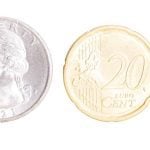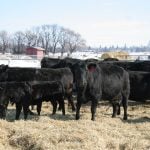GOOD MORNING…HERE IS YOUR MORNING MARKET NEWS
OVERNIGHT GRAIN TRADE
ICE canola futures were managing modest $1 to $3/tonne gains up to an hour ago this morning, but have now turned $1/tonne lower, following weaker soyoil.
CBOT soybeans are trading 4 to 6 cents/bu higher this morning, led by the nearby contracts. Bean futures fell 10 cents on Monday after hitting two-month highs on Friday, as industry players lost confidence that Chinese buyers would purchase US soybeans, while dealers assessed exemptions granted to US crude oil refiners for use of soy-based biofuels.
The US Environmental Protection Agency on Friday approved most backlogs of requests by small oil refineries for exemptions to compulsory biofuel use, raising concerns over reduced demand for renewable fuels often produced from soy.

To continue reading, please subscribe to Western Producer
Subscribe nowAlready a subscriber? Log In
Chicago corn futures are fractionally to a penny weaker. Corn firmed on Monday after a crop tour forecast the US harvest below estimates from the USDA.
US wheat markets are mixed this morning…Minnie spring wheat futures are down 1 to 3 cents, HRW is fractionally to a penny lower, but SRW wheat futures are gaining 1 to 2 cents.
In its weekly national crop condition ratings, USDA on Monday said 71% of US corn is good to excellent, unchanged. 69% of US soybeans are in good to excellent shape as of Sunday, up one point from the week before.
Noted crop consultant Michael Cordonnier left his US national average corn yield unchanged at 184.0 bu/acre with a neutral bias going forward. Cordonnier also left his US soybean yield unchanged this week, at 53.0 bu/acre with a neutral bias going forward.
98% of US winter wheat is harvested, in-line with the average. 49% of US spring wheat is called good to excellent, 1% lower, (33% fair and 18% poor to very poor condition) and 53% is harvested, just behind normal.
In Other News
– Saskatchewan finalizes trade mission to Asia… The dates are set for Saskatchewan Premier Scott Moe’s trade mission…runs September 6 to 12th. It’s a very important region for the province. In 2024, Saskatchewan exported over $10 billion to Asia…$4.4 billion to China, $929 million to Japan and $162 million to South Korea. The goal is to reinforce future trade opportunities and engage with China on their temporary duties on peas and canola.
The Premier has invited Prime Minister Mark Carney and any other federal ministers to join the trade mission. “Saskatchewan has expressed urgency to the federal government and been clear that we need to see action now to support the over 200,000 people across Canada’s canola industry,” Moe said. “That’s why we are leading through this mission, reinforcing future trade opportunities, and engaging with China on these temporary duties before it’s too late.”
Moe’s visit will mark the first time a Canadian premier has conducted a trade mission to China in six years.
– Strong supply and harvest forecast push down Russian wheat export prices… Russian wheat export prices fell last week amid a seasonal peak in supply and optimistic harvest forecasts. The price for Russian wheat with 12.5% protein content for free-on-board (FOB) delivery in the second half of September was US $235/tonne at the end of last week, down $3.50 from the previous week, said the IKAR consultancy. “We are seeing a peak in seasonal supply in the northern hemisphere, while demand from importers is sluggish,” it said. The SovEcon consultancy estimated the price at $236-239/tonne, down $3 from the end of last week.
– Severe drought may hit Ukraine winter rapeseed sowing… The ongoing drought in central, southern and eastern regions of Ukraine may have a negative impact on winter rapeseed sowing, which has already begun, state weather forecasters said. Ukraine is a major European rapeseed grower and exporter with winter rapeseed accounting for the vast majority of the crop. “The lack of moisture accumulation in the soil will have the greatest impact on winter rapeseed, which is best sown between August 25 and September 10,” forecasters said in a report. Forecasters said that the most difficult conditions were in the southern, south-eastern and central regions where precipitation during the period from June 1 to August 20 amounted to only 30-60% of the norm.
Ukrainian agricultural analysts have said that sunflower fields have been the hardest hit by the drought, significantly reducing their estimates for this year’s harvest. Ukraine is a major global sunflower seed grower and sunflower oil exporter.
– Brazil judge grants injunction against soy moratorium suspension… A Brazilian federal judge granted an injunction on Monday temporarily suspending a decision from antitrust watchdog CADE that had ordered grain traders in the world’s largest soy exporter halt their so-called “soy moratorium” program. The two-decade-old private pact was created to protect the Amazon rainforest by barring soybean traders from buying from farmers who cleared land there after July 2008.
CADE’s general superintendent last week gave grain traders 10 days to suspend the soy moratorium or face fines, as the watchdog called for a full investigation into the signatories of the program in which companies share commercially sensitive information. The decision was criticized by grains trader lobbies, environmental group Greenpeace and Brazil’s Environmental Ministry, while welcomed by farm groups including Aprosoja Mato Grosso.
In Monday’s decision, judge Adverci Rates sided with Abiove, a lobby that represents oilseed crushers, ruling to suspend the watchdog’s decision until a full CADE panel makes its final call on Abiove’s appeal.
– Catching up on Carney’s Europe trip… Prime Minister Mark Carney has been traveling through Central and Eastern Europe since Saturday. It’s his fourth trip to Europe since becoming Prime Minister. The former governor of the Bank of England has a personal history with many of the leaders there and expanding Canada’s trade with Europe was a key part of his campaign pledge as a way to respond to US President Donald Trump’s tariff policy.
The trip started with a visit to Kyiv for Ukraine’s Independence Day. Carney said Canada has not ruled out the possibility of having Canadian troops on the ground in Ukraine if a ceasefire is reached in the country’s war with Russia. Canada’s military already operates in the region by providing training to Ukrainian soldiers.
Calls for a ceasefire have dominated Carney’s conversations in Ukraine and Poland, where he met separately Monday with Polish Prime Minister Donald Tusk and President Karol Nawrocki.
Today’s agenda includes a meeting with German Chancellor Friedrich Merz in Berlin, followed by a trip by helicopter to Kiel where Carney will tour a submarine manufacturing facility.
A final stop in Riga, Latvia, begins Tuesday evening when he will meet with Latvian Prime Minister Evika Silina. On Wednesday he will visit members of the Canadian Forces at the Adazi Military Base before returning to Ottawa.
This morning, Carney said his government has shortlisted a German and a South Korean company as the two final contenders to supply submarines to the Royal Canadian Navy. He also announced an agreement with Germany to co-operate on critical minerals, including co-funding new projects.
While the meetings are heavily focused on the war in Ukraine, it’s clear there’s an economic angle to the defence discussions. At a NATO summit in June, Carney promised that Canada would join members in a dramatic defence spending hike, to 3.5% of GDP by 2035, from a current target of 2%, as well as an additional 1.5% on defence-related spending such as infrastructure.
Outside Markets
The Dow Jones Industrial Average tumbled 349.27 points lower on Monday to settle at 45,282.47, while the S&P 500 dipped 27.59 points lower to 6,439.32. Early Tuesday, the September Dow Jones Futures are down another 42 points.
Global stock markets are weakening this morning after US President Donald Trump announced he is pushing to fire US Federal Reserve governor Lisa Cook, an unprecedented move that further undermines confidence in the Fed’s independence. Wall Street futures are down as the news muddied the outlook for Fed policy and stoked uncertainty over prospects for a US interest rate cut next month.
Canada’s TSX stock index futures followed sentiment lower…along with stock market declines overnight in Europe and Asia.
The September US Dollar Index is down 0.168 at 98.150. The Canadian dollar is steady against its US counterpart…currently quoted at 72.26 US cents.
October crude oil futures are $1.00 lower at $63.80/barrel. Oil prices eased after surging nearly 2% yesterday, with traders keeping a close eye on developments regarding the Ukraine war that could disrupt Russian fuel supplies.
Grain Markets
Chicago soybean futures are rebounding 4 to 6 cents/bu higher to start this morning as US-China talks are planned for this week…not negotiations, just lower level talks. Bean futures posted losses of 9 to 11 cents across most contracts on Monday. Soymeal futures are rising $1 to $2/ton this morning after finished mixed yesterday. Soyoil futures continue to weaken…down 50 to 57 points right now after finishing 18 to 53 points lower yesterday.
A Chinese trade official is heading to Washington this week for meetings with US trade reps according to a Wall Street Journal report. Soybean purchases are expected to be discussed…which has been a glaring issue for the soy trade as China has purchased nothing officially from the US as the new crop harvest looms…Beijing preferring to direct all its soy buying to South America.
The USDA says 69% of US soybeans are in good to excellent condition, up 1% from the previous week, with 89% at the pod setting stage and 4% dropping leaves, matching their five-year averages.
Chicago bean futures have rebound rallied surprisingly well in August despite a record Brazil crop, a large US crop pending and the US seeing an alarming low level of China sales on the books for fall shipping (none). The new marketing year for US soybeans, and corn, kicks off September 1st.
The market has become technically overbought in the short term due to the almost 70 cent rally over the past two weeks. Recent price action perhaps warrants rewarding the rally thus far with an incremental forward cash sale of 2025 soybean production for products that needs to move off the combine.

Chicago corn futures are trading fractionally to a penny lower this morning. On Monday, the corn market posted gains ranging from fractional to penny in the front months.
USDA’s weekly crop progress report showed a total of 44% of the US corn crop dented, with 7% pegged as mature, both in line with average. Condition ratings were steady at 71% good/excellent.
Export demand for US corn remains robust, providing underlying price support. Current US export inspections for shipment are up 28% year-over-year, with USDA expecting a 25% increase.
Pro Farmer’s annual US Midwest crop tour last week concluded a 2025 corn crop size below the current USDA guesstimate due to disease issues in key growing portions of the region. But both the USDA and Pro Farmer are forecasting a crop above 16 billion bu, which would drive 2025-26 US corn carryout sharply higher, even with strong demand expectations for most sectors.
The corn market must also still grapple with a record large second crop harvest wrapping up in Brazil.
US wheat markets are mixed this morning… Minnie spring wheat futures are slipping 1 to 3 cents lower, HRW down fractionally to a penny, but SRW wheat is up 1 to 2 cents. The US wheat complex also saw mixed action on Monday, with the KC market the weak link, SRW wheat 2 to 3 cents higher, while spring wheat closed Monday with 2 cent gains.
But wheat markets overall remain pressured by harvest activity that is advancing quickly and lower prices worldwide.
USDA projects the US winter wheat harvest at 98% complete. The US spring wheat crop was seen at 53% harvested, behind the 54% average…and crop condition called 49% good to excellent, down 1 point from the previous week. There are quality concerns in the northern US Plains and Canadian Prairies.
USDA wheat export shipments are running strong…a multi-year high 946,240 tonnes for the latest week ended Aug 21. That was more than double the previous week. US wheat marketing year exports have totaled 5.763 MMT, which is 10.99% above the same period last year.
Russia’s wheat crop estimate from IKAR was raised by 0.5 MMT to 86 MMT, with the exports raised by the same to 43 MMT.
There’s a lot of wheat available globally right now, and world prices remains generally weak.
CANADIAN GRAIN MARKET
ICE canola futures closed weaker for the first time in four sessions on Monday amid declines in Chicago soyoil over US biofuel demand questions. The US Environmental Protection Agency on Friday approved many of the requests by small oil refineries for exemptions to mandatory biofuel use. After pursing through the details, the trade now sees the ruling as reducing demand for biofuel overall, which can use soy and canola oil as a feedstock in production.
Malaysian palm oil futures were also lower yesterday, but European rapeseed was higher.
Friday’s Alberta crop report put the overall harvest in that province at just 2% complete as of last Tuesday, behind the five- and 10-year averages. Canola was reported to be less than 1% harvested.
Prairie harvest progress is expected to accelerate in the coming days, with little rain in the forecast for the next 10 days.
November canola fell $7.10 on Monday to close at $659.40/tonne, and January lost $6 to $671.50.
For today… canola futures were trading as much as $2 to $3/tonne higher just an hour ago, but have now turned $2 to $3/tonne lower this morning. Nov canola is down $2.90 at $656.50/tonne…flirting the previous two trading sessions with its 20-day moving average ($668), but failing. Underlying chart support resides at the 200-day average ($650). But net overall, the downward trendline drawn off the June high remains intact as we lean into harvest season.

Improved Prairie harvest weather is now emerging following recent widespread rain and storm action.
Soyoil extending its pullback this morning following a surge to end last week on conflicting SRE developments. European rapeseed and energy markets are weak as well. Suggests near-term upside potential in the canola could be limited to temporary corrective measures.
Malaysian palm oil continues to pull back from the contract highs posted a week ago on concerns over demand from India slowing if it gets too high priced compared to soyoil.
To access the latest futures prices, go to https://www.producer.com/markets-futures-prices/












